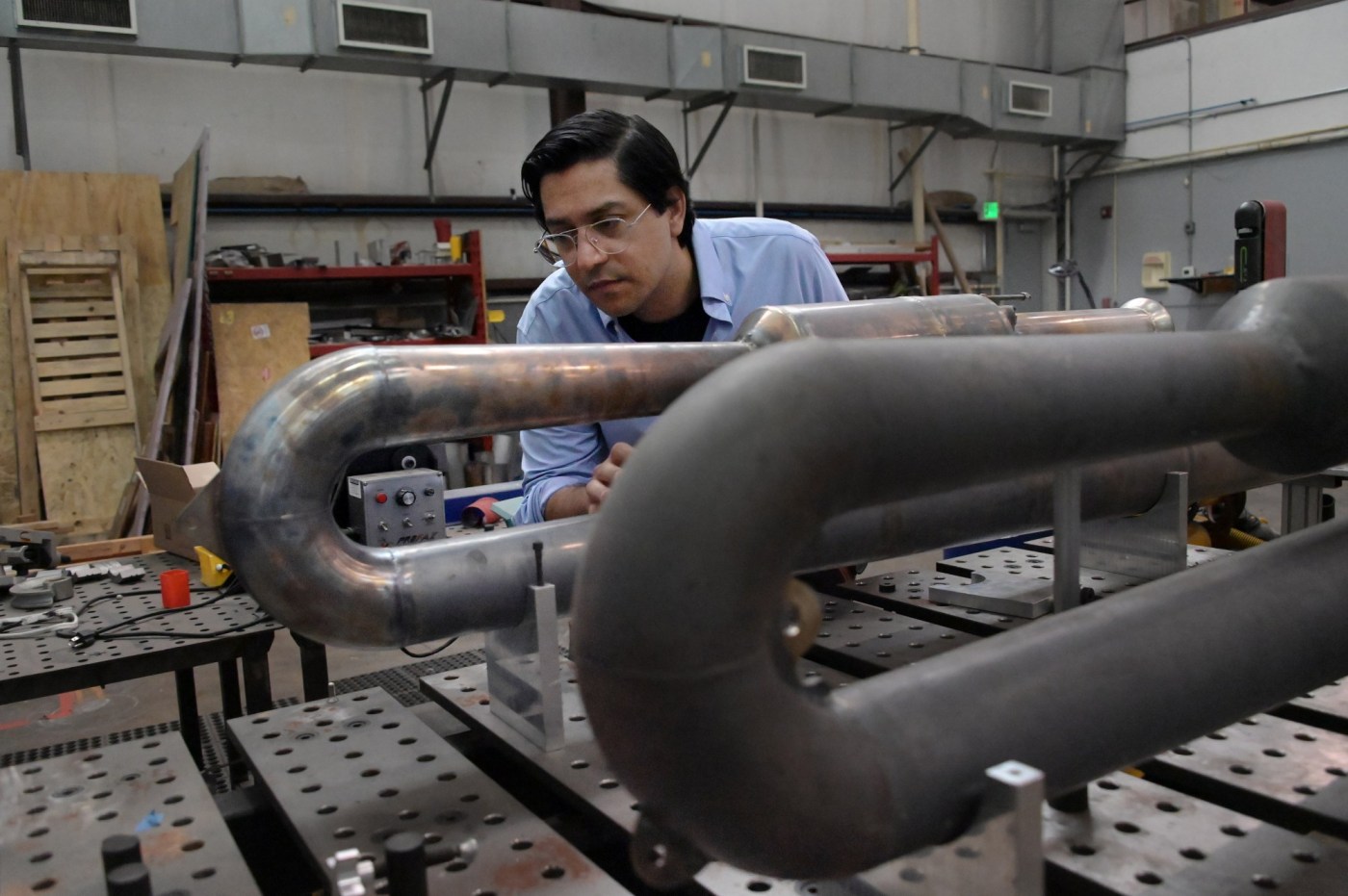Technology
Startup Seizes $73B Drone Market with Innovative Wave Engines

Baltimore-based startup, Wave Engine Corp., is poised to transform the drone industry with its revolutionary propulsion technology. The company, which emerged from research at the University of Maryland in 2017, aims to address the soaring demand for drones across various sectors. According to market estimates, the global drone industry reached a value of $73 billion last year, with projections indicating that it could more than double by 2030.
Daanish Maqbool, the CEO of Wave Engine Corp., recognized the potential of drone technology while pursuing his doctorate in aerospace engineering. His research focused on enhancing propulsion systems for unmanned aerial vehicles (UAVs), identifying engines as a significant bottleneck in mass production. The company’s innovative approach involves creating jet engines that operate without any moving parts, using pressure waves instead.
Innovative Technology and Market Potential
Wave Engine’s products are already capable of powering drones, with plans to extend their use to general aviation aircraft. The firm has produced nearly 50 engines for various clients, including contractors for the federal government, with ambitions to manufacture tens of thousands of units annually. Maqbool emphasized the need for affordable, high-volume aircraft in the military sector, particularly as drones become essential for intercepting incoming threats.
“There is a need for low-cost aircraft that can be produced in high volumes and can achieve high speeds,” Maqbool stated. “Customers buying UAVs don’t want a few, very expensive things. They want many affordable options.” The technology behind Wave Engine’s products allows for high efficiency and lower production costs, as the engines are constructed from readily available materials, primarily stainless steel, reducing reliance on expensive precision parts.
The company’s unique wave engines generate thrust through intermittent combustion, which creates pressure pulses that push air out of both ends of a tube, a significant departure from traditional turbine engines. This design not only simplifies manufacturing but also enhances performance.
Wave Engine Corp. is currently the only company in the western hemisphere developing similar wave engine technology, while similar engines are reportedly in development in Russia. The company, which has around seven full-time employees, raised $1.5 million in a funding round led by the Abell Foundation and the University System of Maryland’s Maryland Momentum Fund in 2018, followed by an additional $3.5 million round.
Advancements in Drone Production
Located in a warehouse on Baltimore’s Canton industrial waterfront since 2022, Wave Engine showcases a series of prototype engines that demonstrate the evolution of their technology from concept to production-ready designs. The company has received or is pending for dozen patents, reflecting its commitment to innovation.
“Once you actually start flying these things, you also start learning about different challenges that you have in the air,” Maqbool explained. The process of refining their technology is ongoing, with further developments aimed at improving noise reduction, efficiency, and engine longevity for commercial applications.
Wave Engine is also actively developing drones, with its latest model, the “Scitor-P,” featuring a top-mounted wave engine. The Scitor-P has undergone its first flights, with the second occurring on August 12, 2023. This drone is set to enter the market as a product for decoy and aerial target applications, with pre-orders already from a customer serving the Department of Defense.
In June, the Defense Department announced plans to increase drone production, a move that aligns with the growing recognition of the need for advanced UAV capabilities. Defense Secretary Pete Hegseth indicated in a memo that policies hindering drone production would be rescinded, paving the way for the military to purchase American-made drone technologies.
The inception of Wave Engine originated from the University of Maryland’s aerospace engineering department, where Maqbool and fellow researchers focused on propulsion technology. With a background in engineering from the Massachusetts Institute of Technology, Maqbool found the complexity of wave engines to be a compelling challenge.
“This technology has compelling practical uses, particularly given the cost and manufacturing advantages,” he noted. As the company continues to expand, it aims to inspire the next generation of manufacturers in Baltimore. “They have the potential to continue growing and then hiring some of our local, up-and-coming generations to help with the future growth of unmanned aerial vehicles,” said Elizabeth Rhode, director of business development for the Baltimore Development Corporation.
Wave Engine’s progress highlights a significant shift in the drone market, driven by innovation and a determination to meet the increasing demand for efficient, cost-effective UAV solutions. As the company prepares for future advancements, it remains committed to unlocking new markets and applications for its groundbreaking technology.
-

 Technology4 months ago
Technology4 months agoDiscover the Top 10 Calorie Counting Apps of 2025
-

 Health2 months ago
Health2 months agoBella Hadid Shares Health Update After Treatment for Lyme Disease
-

 Health3 months ago
Health3 months agoErin Bates Shares Recovery Update Following Sepsis Complications
-

 Technology3 weeks ago
Technology3 weeks agoDiscover 2025’s Top GPUs for Exceptional 4K Gaming Performance
-

 Technology2 months ago
Technology2 months agoElectric Moto Influencer Surronster Arrested in Tijuana
-

 Technology4 months ago
Technology4 months agoDiscover How to Reverse Image Search Using ChatGPT Effortlessly
-

 Technology4 months ago
Technology4 months agoMeta Initiates $60B AI Data Center Expansion, Starting in Ohio
-

 Technology4 months ago
Technology4 months agoRecovering a Suspended TikTok Account: A Step-by-Step Guide
-

 Health4 months ago
Health4 months agoTested: Rab Firewall Mountain Jacket Survives Harsh Conditions
-

 Lifestyle4 months ago
Lifestyle4 months agoBelton Family Reunites After Daughter Survives Hill Country Floods
-

 Technology3 months ago
Technology3 months agoUncovering the Top Five Most Challenging Motorcycles to Ride
-

 Technology4 weeks ago
Technology4 weeks agoDiscover the Best Wireless Earbuds for Every Lifestyle





















